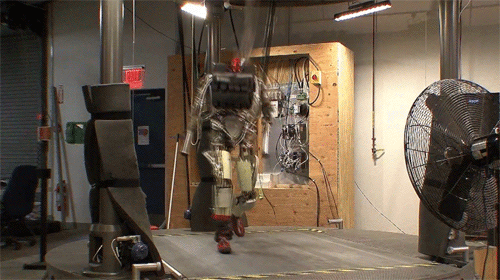Sometimes when Americans consider the path forward with regards to genetic engineering or an automated military, we do so in a vacuum. We would never do that. That’s not how it will unravel, of course. We’ll be responding to other world powers, and sometimes in a race, a competitor will run much faster than anticipated.
In a Financial Times piece, Geoff Dyer writes of the “split-screen reality” of the Pentagon, charged with fighting ISIS in a painstakingly Vietnam-ish slog while preparing for a possibility of a Digital Age WWIII with China or Russia or whomever. “We must be prepared for a high-end enemy,” Defense Secretary Ashton Carter says. We’ll also be trying to outpace our own fears, not necessarily the same thing as realities, and anxieties can take on a life of their own.
An excerpt:
The underlying objective of the new strategy is to find weapons and technologies to ensure US forces “can fight their way to the fight” as one official puts it — to evade the layered missile defences both China and Russia can erect, to defend bases against attack from precision-guided missiles and to be able to operate carrier fleets at a much greater distance from an enemy.
For some Pentagon planners, the long-term answers will be found in robotics — be they unmanned, autonomous planes or submarines that can surprise an enemy or robot soldiers that can reduce the risk to humans by launching attacks. Mr Work, who once co-wrote a paper called “Preparing for War in the Robotic Age”, said in December: “Ten years from now, if the first person through a breach isn’t a fricking robot, then shame on us.”
Mass attack
Last week Mr Carter talked about “swarming, autonomous vehicles” — an allusion to another idea that animates current defence thinking in Washington, the use of greater volumes of aircraft or ships in a conflict. The emphasis in American military technology in recent decades has been on developing weapons platforms that are deployed in fewer numbers but boast much greater capabilities, such as the F-35 fighter jet. However, backed by low-cost production techniques such as 3D printing, Pentagon planners are flirting with a different model that seeks to saturate an enemy with swarms of cheaper, more expendable drones.
“It is the reintroduction of the idea of mass,” says Mr Brimley at CNAS. “Not only do we have the better technology but we are going to bring mass and numbers to the fight and overwhelm you.”
Mr Work’s other big theme is the combining of human and machine intelligence, whether it be wearable electronics and exoskeletons for infantry soldiers or fighter jets with suites of sensors and software passing data to the pilot.•
Tags: Geoff Dyer

